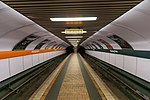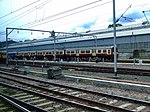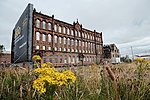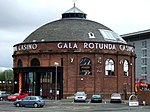Kinning Park (sports ground)
Athletics (track and field) venues in ScotlandClydesdale F.C.Defunct cricket grounds in ScotlandDefunct football venues in ScotlandDemolished buildings and structures in Scotland ... and 7 more
Demolished sports venues in the United KingdomFootball venues in GlasgowKinning ParkRangers F.C.Sports venues completed in 1849Sports venues demolished in 1887Sports venues in Glasgow
Kinning Park was a 19th-century sports ground in Kinning Park, Renfrewshire, Scotland, primarily used for cricket and football. It was the home of Clydesdale Cricket Club from 1849, staging a number of important matches against visiting English teams. It was also the original home of the club's football team, Clydesdale F.C. When both teams relocated to Titwood in 1876, Kinning Park was taken over by Rangers F.C., who played there until moving to the first Ibrox Park in 1887. The ground was the venue for the 1881 Scottish Cup Final (and replay) between Queen's Park and Dumbarton.
Excerpt from the Wikipedia article Kinning Park (sports ground) (License: CC BY-SA 3.0, Authors).Kinning Park (sports ground)
M8, Glasgow Kinning Park
Geographical coordinates (GPS) Address Nearby Places Show on map
Geographical coordinates (GPS)
| Latitude | Longitude |
|---|---|
| N 55.849722222222 ° | E -4.2844444444444 ° |
Address
M8
G41 1BH Glasgow, Kinning Park
Scotland, United Kingdom
Open on Google Maps









